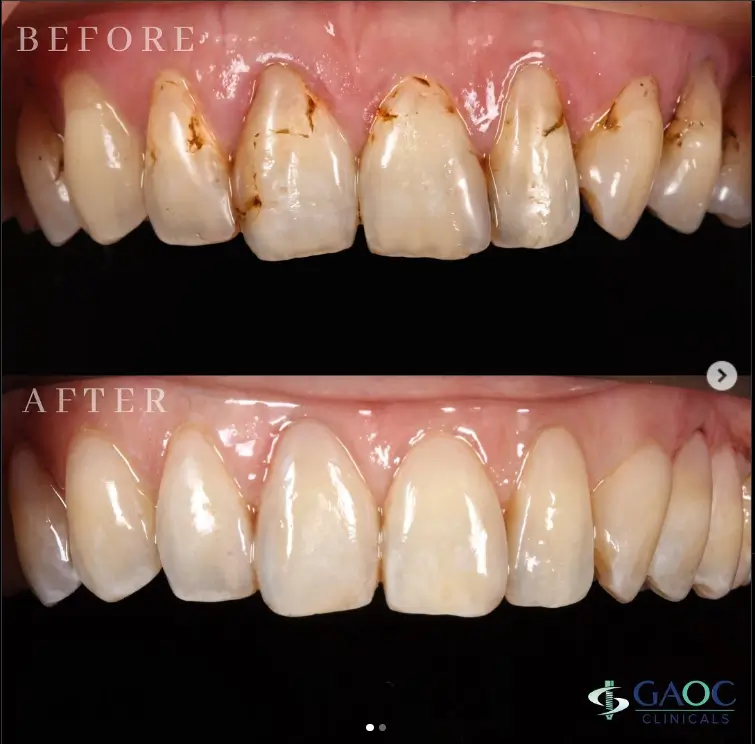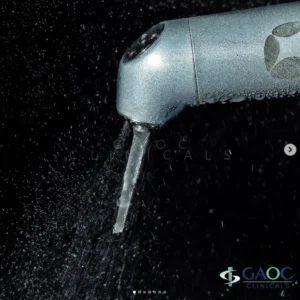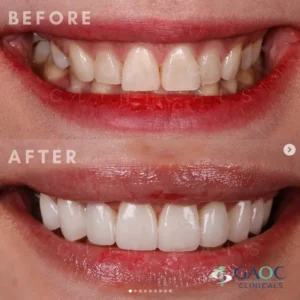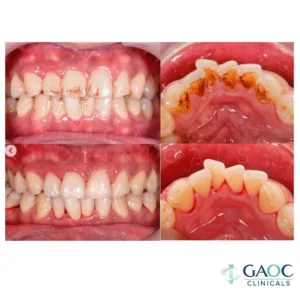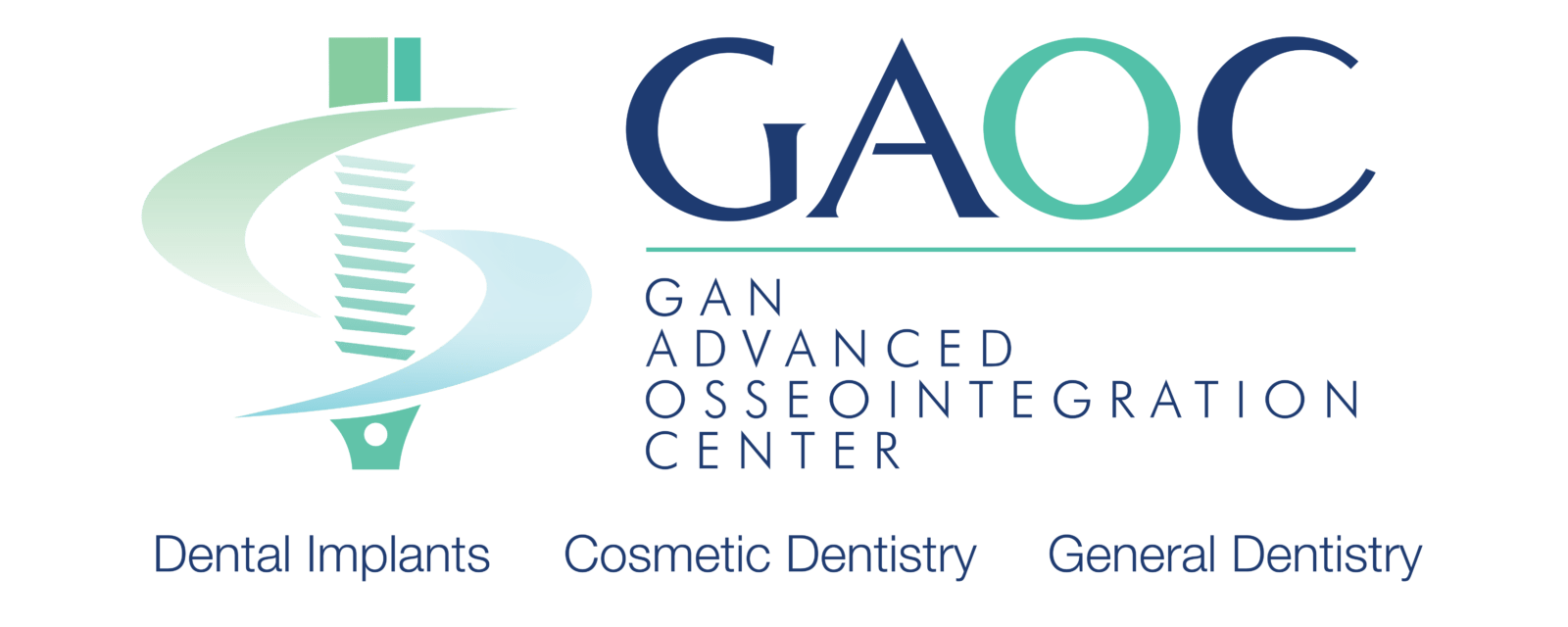Composites are the most versatile restorative material available to the dental professional, especially for the esthetic-conscious patients. For composite restorations to mimic natural tooth structure, the clinician must have a comprehensive understanding of the material science and techniques involved in direct bonding procedures.
A 58-year old female patient presented with discoloration of old composite restorations on cervical thirds of multiple upper teeth. Microfractures of old restorative material contributed to the roughening of the surface, making the composite susceptible to stains.
Treatment began by removing old existing restorations using high-speed diamond burs. Adhesive procedures included etching using 37% phosphoric acid that superficially demineralizes the enamel and dentin in preparation for bonding with visible-light activated dental bonding agent. A composite with nanotechnology was used for excellent esthetic results, polish retention, and low wear. Nanotechnology composites are able to blend the restoration with the existing dentition resulting in a seamless and natural-looking restoration. Finishing and polishing were performed with burs, silicone points, and discs.
In conclusion, composite restorations are a very good option to reconstruct the aesthetics and function in the anterior region in a very short time. With proper techniques and skills, they are one of the most adaptable, conservative, and aesthetic restorative dental treatments.

